The journey back to Akurula beach with Karu and his driver Sampath, was luxurious. They asked me if I wished to stop anywhere, but I said just at the stilt fishermen, just before Galle. I was tired after all that safari, and just wanted to get to Akurula. Unfortunately when we arrived at Koggala, the weather was wet and cloudy and all the fisherman had disappeared. So reluctantly we carried on.
Back at Karu’s, I meet up with his family again, plus some of the neighbours and we had a good old laugh into the night
. I was crossing my fingers for some sunshine. The next morning delivered, after the previous day’s disappointment and I quickly decided to get Sampath and Karu to drive me around the local major sights including a return to Koggala. While this was not cheap, I was running out of time and felt this was at least the best way to ensure I saw everything that I wished to see.
We left at 7.00, but had a 30 min stop at the local Hindu temple to leave a fruit basket offering. Both Karu and Sampath are Buddhists, so this was confusing and when I asked Karu about this he replied “the two religions are related, so that’s why we leave the offering!”
By the time we got to Koggala, the sun was quite high and I was worried it would be too bright. But sure enough there were ten fisherman on their high stilts fishing away in a small cove. These stilts are one piece of wood, a 12 ft high pole (I estimate), driven into the the sea bed where the fisherman perches and fishes using their homemade wooden rods and nylon lines
. However as soon as we parked, they all dismounted and ran over asking for money. They actually demanded $30 - ridiculous! I was furious and they would not bargain. I stormed back to the car, but Karu had other ideas. Once he had calmed me down, we drove away and then returned to the cove and parked a way up the street. We then crawled to a large shrub overlooking the cove, so I could take pictures. I got some good shots, that were quite authentic - funnily enough.
Karu then asked Sampath to drive one kilometer east to another small village, where we saw two fishermen. They also wanted money but just $2, which was more like it. It was interesting to see them fish and perch close up in quite big surf. They told me that they still fish successfully from these stilts, but it was mainly for their own consumption as the fish were too small to sell. I was very grateful to Karu for sorting this out and I bought them an early lunch
.
During lunch it took me a while to convince both Karu and Sampath that I did not want to see a Buddhist temple, a private garden and a sweet factory, and when this was done we headed north. First they took me to the Kosgoda Turtle Conservation Project in Kosgoda. This project was run by volunteers and started 18 years ago. It was very basic and run on a shoestring. It also relied on help from tourists and British sponsors to keep going. It was all very interesting, seeing them deal with Green, Hawksbill and Leatherbacks. All eggs were brought from local egg hunters, who used to sell the eggs for food, but now sell to this project. They are then hatched and returned to the sea, after a few days. They also rescue injured turtles and care for them permanently. It was a small operation, with dedicated staff. They (like Karu) were also still rebuilding after the Tsunami which destroyed everything and killing many staff
. The guy who took me around suggested that if I could return at sunset, then I could help with the release the turtles - great.
After this visit we were due to visit the Mangrove swamps for a boat trip, but Karu felt it was too early in the day. So he suggested a visit to a spice garden. Arlene at Halgolla had warned against this, but contrary to my wariness, Karu insisted. The spice garden itself was interesting, well maintained and I was given a guided tour. I soon realised that I would have to buy something (which was not a problem), but it did not stop there, as when I was being given the rundown of all the ointments in the shop, another assistant whipped off my shirt and gave me a back massage with the oils, without asking. Consequently when he finished, I thought I should tip him, and gave him 5 dollars, but he shoved it back saying he wanted $10. I said no, he got angry. Then the other guy said he wanted 10 dollars as well
. I was furious. I was only paying $10 for my room, this was a joke. A huge argument entailed and I stormed out.
Karu said he would take me for an “English tea break to calm down”. A cinnamon cake and a black tea did the trick, but he seemed not to understand that the spice garden staff and the fisherman wanted $50 in total, and I felt this was extortionate. This of course was substantially more than he and Sampath were getting, but I still felt he did not quite understand my point of view. Arlene was dead right - spice gardens are rip offs.
By now it was time for the boat trip on the Mangrove Lagoon and this turned out to be excellent. We saw many kingfishers, herons, cormorants and some monkeys jumping from tree to tree in the Mangroves. We also when to a cinnamon plantation on an island and watched the hand production process. All the while the local community were fishing from traditional canoes and aqua farming. It was very interesting.
We finished at the start of sunset and hurried off back to the Turtle Project where armed with a bucket I was led down to the beach and set off my ten turtles towards the surf. It was a great end to a good day and seeing the turtles disappear in the waves was great.
The next day I went by myself to Galle. I had knew it was best to get back to doing my own thing. My friends in Bardolino, Sanjiv and Nilanka were from Galle and gave me many hints of what to do, but I was not prepared for how interesting and enchanting the old fort of Galle would be. The fort was established by the Portuguese some 500 years ago and then the Dutch developed it into a town towering about the sea. The walls we so big and thick they repelled the Tsunami, while the rest of the new town was destroyed. The British arrived in the 18th century and developed it as the major Sri Lankan port before Colombo took over in the 20th century. Inside the walls is still a thriving community with many muslims of Moroccan descent from the original spice traders that plied the seas some 500 years ago. The historical building reminded me of some I had seen in Cuba, particularly Trinidad de Cuba. One story high with wooden pillars, a verandah and terracotta tiles. Little boutiques, artist houses and small luxury hotels were all crammed in amongst schools, temples, mosques, law courts and maritime museums. All this was surrounded by these huge Dutch walls and a clock tower to the north and a lighthouse of the south. I walked around enchanted. I had tea with a man of Moroccan descent, who was so interesting about the history of the fort and the tea of Sri Lanka. Fazal gave me the best cup of tea yet. Golden tip tea, from his own selection. I also met a resident French artist Christine who had some fabulous art work and an Englishman, Michael, who sold original Bollywood film posters. There were obviously plenty of tourists but still three hours was enough to see the fort, which was good as it was very hot and I got prickly heat for the first time.
Outside the fort, dominated by the clock tower, the gate and those towering walls was the cricket ground. Billed as the most beautiful it was certainly eye catching despite hosting a rugby match the day before. The pavilions had been destroyed by first the Tsunami and then a big storm three years ago, but the new ones were taking shape. I was allowed onto the pitch but not into the President’s stand, even though I said Ian Botham was my father. The security guard just laughed at me.
Next I visited the Galle railway station, an art deco construction that appeared not to have changed in 100 years with wooden manually operated arrival & departure boards, waiting rooms, a canteen and postal rooms. I managed to get an impromptu tour of this, whilst organizing my tickets for the next Thursday. Finally made my way back to the Galle fort for the sunset and dinner, and on the way stumbled onto the old Lloyds shipping building, with its wooden shipping boards. The friendly security guard let me in to the main courtyard, which was now in a dilapidated state but still very interesting with all the offices on two floors surrounding a tiny overgrown courtyard. The sunset was nice and I enjoyed a curry dinner at Mamas before catching an overcrowded, uncomfortable bus home.
My last day at Akurula involved going to meet Mr Batu and view his train set. He had invited me the week before after we had met each other on a train trip, and this was the only day we could arrange. I traveled to Batuwanthudawa, first by bus and then tuk tuk. This was some ten kilometers north of Galle in the rice paddies. His house was actually on a small “island”. There the five houses in total on this island and they all belonged to his extended family and was idyllic. Each house was surrounded by fruit trees with monkeys and birds everywhere. The island was even named after this family. One of his neighbour even had two pet squirrels who nested rather bizarrely in the air conditioner.
Mr Batu had been given his model train set by a German from Leverkusen just over ten years ago when he retired from the national rail company as a train driver. He had a large collection of 40 engines and over 100 carriages, plus stations, a turn table and many extras. In a spare room, he and his son had built a replica of a stretch of track built by the British that he said was a “miracle of engineering”. His model was impressive and Karu”s son had told me he had been on TV three times with this and was well known as the only man with a train set in Sri Lanka. He was obviously very good friends with this German man who came out every three years to maintain the set and deliver some more engines. Many of the engines, the German had built and each one was modeled on a working Sri Lankan engine, down to the actual train number. Each one had lights and could be driven at night. It was incredibly impressive and a source of great joy for the 77 year old Mr Batu, whose eyes shone brightly when he showed me everything it could do. His wife kindly cooked me lunch afterwards. I was very grateful for this unique opportunity.
Back at Akurula Beach, I met Mrs Karu and we went shopping. I offered to buy some food if she would teach me how to cook, Sri Lankan style and so off we went. With all this food to prepared I had thought it was best to have a sort of dinner party in their open air dinning room. I originally thought this would just be attended by the family, but during that afternoon it transpired that many village neighbours had invited themselves so the guest number had swelled to 16. I was very concerned as her kitchen was in a concrete hut, hurriedly built after the tsunami, and the temperatures were horrific during cooking. The only other person who could bear it was “Auntie”, and 72 year old women who seemed to help with everything. But Mrs Karu laughed off this invasion and seemed to relish the challenge.
At the market I asked her to cook all the vegetable curries with vegetables I could find in the UK. So we had green beans, leeks, carrots, potatoes, lentils plus rice and popadoms. I then thought I should get the men something to drink and they of course wanted hard liquor, Arak (distilled coconut juice or whatever is handy). The women asked for water and milk. At the fish market I bought a huge Tuna for $7 and plenty of squid for $4.
Back in the concrete Kitchen with the gas stoves, we started. I chopped with a neighbour, who though it was funny that a man was interested in cooking. All the Sri Lankan men had suddenly disappeared. Later we found them already drinking the Arak. We were only thirty minutes from being ready and the time for everyone to arrive when a power cut occurred. All we could find was my small travel torch and Mrs Karu did wonders finishing the cooking in the dark with Auntie. The kitchen was now like a sauna. Then as we tried to lay the table a huge tropical storm broke arrived with driving rain. In the pitch black it was not easy under this small outdoor roof which was now being bombarded by falling coconuts. This makeshift dinning room also had no walls, which made me feel somewhat vulnerable. Nobody else seemed concerned.
The storm and the black out prevented some people coming, which was handy as others just seemed to materialise. Word was obviously getting around and Mrs Karu’s cooking was well known.
Eventually with one torch and one candle, we sat down to eat. Nine of us, all crammed around Mr Karu’s salvaged tables from the Tsunami wave with just five chairs. Several sat on the floor or on two of the motorbikes brought in from the rain. Luckily everyone eats with their hands in Sri Lanka as we had no need of cutlery. The food was indeed fabulous, and I got all the recipes. When we finished, the men quickly descended into a drunken stupor just as the power came on, and then the dinner quickly disbanded. An excellent day.
The next morning Auntie had cleared it all away, and I had breakfast early, said goodbye to Mrs Karu and Auntie and boarded a train to Negombo, via Colombo. On the train I bumped into Richard from Tissa, which was great. At Colombo I said goodbye to him and met up with Mr Karu who was there looking for tourists at the main station. I said goodbye to him and also thanked him.
The train journey to Negombo was long laborious and delayed. I met a Taiwanese guy called Kevin and a French family, and three hours later we completed the 60 Km journey and arrived at the seaside town of Negombo, thirty mins from the international airport.
Dinner Parties, Train Sets & Stilt Fisherman
Thursday, August 01, 2013
 Galle, Southern, Sri Lanka
Galle, Southern, Sri Lanka
Other Entries
-
1Getting ready, jabs, doctor, backpack set up etc
Jun 1547 days prior Blagdon, United Kingdomphoto_camera2videocam 0comment 0
Blagdon, United Kingdomphoto_camera2videocam 0comment 0 -
2The Final Week
Jun 2933 days prior London, United Kingdomphoto_camera2videocam 0comment 0
London, United Kingdomphoto_camera2videocam 0comment 0 -
3Indian Visa Chaos and Arrival in Colombo
Jul 0725 days prior Colombo, Sri Lankaphoto_camera1videocam 0comment 6
Colombo, Sri Lankaphoto_camera1videocam 0comment 6 -
4Colombo, City of Curries and Cricket
Jul 1022 days prior Colombo, Sri Lankaphoto_camera3videocam 0comment 0
Colombo, Sri Lankaphoto_camera3videocam 0comment 0 -
5The Sri Lanka cloud forest.
Jul 1319 days prior Nuwara Eliya, Sri Lankaphoto_camera2videocam 0comment 3
Nuwara Eliya, Sri Lankaphoto_camera2videocam 0comment 3 -
6A Traditional Plantation House
Jul 2012 days prior Galagedera, Sri Lankaphoto_camera2videocam 0comment 1
Galagedera, Sri Lankaphoto_camera2videocam 0comment 1 -
7Baby Elephants, water & mud!
Jul 248 days prior Giritale, Sri Lankaphoto_camera4videocam 0comment 6
Giritale, Sri Lankaphoto_camera4videocam 0comment 6 -
8Traffic Jams and Great Birdlife in National Parks
Jul 257 days prior Tissamaharama, Sri Lankaphoto_camera4videocam 0comment 0
Tissamaharama, Sri Lankaphoto_camera4videocam 0comment 0 -
9Dinner Parties, Train Sets & Stilt Fisherman
Aug 01 Galle, Sri Lankaphoto_camera5videocam 0comment 1
Galle, Sri Lankaphoto_camera5videocam 0comment 1 -
10Negombo & Bangkok & Prickly Heat
Aug 043 days later Bangkok, Thailandphoto_camera3videocam 0comment 2
Bangkok, Thailandphoto_camera3videocam 0comment 2 -
11Phnom Penh, Palaces, Genocide & Pajamas
Aug 098 days later Phnom Penh, Cambodiaphoto_camera4videocam 0comment 2
Phnom Penh, Cambodiaphoto_camera4videocam 0comment 2 -
12More Elephants, Hoeing & Hello Kitty
Aug 1615 days later Sen Monorom, Cambodiaphoto_camera3videocam 0comment 1
Sen Monorom, Cambodiaphoto_camera3videocam 0comment 1 -
13Prasat Preah Vihear, Soldiers & A Bordello
Aug 1817 days later Preah Vihear, Cambodiaphoto_camera4videocam 0comment 0
Preah Vihear, Cambodiaphoto_camera4videocam 0comment 0 -
14Angkor Wat, orphans & getting wet.
Aug 2423 days later Siem Reap, Cambodiaphoto_camera3videocam 0comment 0
Siem Reap, Cambodiaphoto_camera3videocam 0comment 0 -
15Tata, Trains, Taxis and Rickshaws. Chaos & Theft
Aug 3130 days later Kolkata (Calcutta), Indiaphoto_camera6videocam 0comment 0
Kolkata (Calcutta), Indiaphoto_camera6videocam 0comment 0 -
16The Pink/Orange City, Masala Tea, Amber Fort
Sep 0838 days later Jaipur, Indiaphoto_camera4videocam 0comment 1
Jaipur, Indiaphoto_camera4videocam 0comment 1 -
17Bundi, Dust, Forts and the real Rajasthan
Sep 1242 days later Bundi, Indiaphoto_camera5videocam 0comment 0
Bundi, Indiaphoto_camera5videocam 0comment 0 -
18Maharajas, Lakes, Vintage Cars and Birds
Sep 1545 days later Udaipur, Indiaphoto_camera5videocam 0comment 0
Udaipur, Indiaphoto_camera5videocam 0comment 0 -
19Big Moustaches, Street Food & Big Forts
Sep 2050 days later Salawas, Indiaphoto_camera6videocam 0comment 0
Salawas, Indiaphoto_camera6videocam 0comment 0 -
20Psychotic Cows, Nagas, Omar Sherif & Desert Forts
Sep 2656 days later Jaisalmer, Indiaphoto_camera4videocam 0comment 0
Jaisalmer, Indiaphoto_camera4videocam 0comment 0 -
21Special Blog: Seva Ram & Jitu Solanki
Oct 0161 days later Bikaner, Indiaphoto_camera5videocam 0comment 0
Bikaner, Indiaphoto_camera5videocam 0comment 0 -
22Public Speaking, Painted Havelis and lots of rats!
Oct 0464 days later Mandawa, Indiaphoto_camera8videocam 0comment 0
Mandawa, Indiaphoto_camera8videocam 0comment 0 -
23National Parks, Road Rage, Drunks & a Tiger!
Oct 1272 days later Bharatpur, Indiaphoto_camera4videocam 0comment 2
Bharatpur, Indiaphoto_camera4videocam 0comment 2 -
24Mosques, Cremations, Festivals & Dhal
Oct 2181 days later Varanasi, Indiaphoto_camera7videocam 0comment 0
Varanasi, Indiaphoto_camera7videocam 0comment 0 -
25Nepal, trekking, Cold, Everest and Gurkas
Oct 2888 days later Kayakatta, Nepalphoto_camera4videocam 0comment 0
Kayakatta, Nepalphoto_camera4videocam 0comment 0 -
26Karmi Farm, Sherpa Tenzing, Mr Happy and Momos
Nov 0596 days later Darjeeling, Indiaphoto_camera4videocam 0comment 0
Darjeeling, Indiaphoto_camera4videocam 0comment 0 -
27Rhinos, Armed Guards & Posing For Photos
Nov 14105 days later Kaziranga National Park, Indiaphoto_camera5videocam 0comment 0
Kaziranga National Park, Indiaphoto_camera5videocam 0comment 0
Comments
2025-05-22
Comment code: Ask author if the code is blank

 Galle, Southern, Sri Lanka
Galle, Southern, Sri Lanka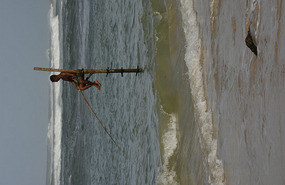
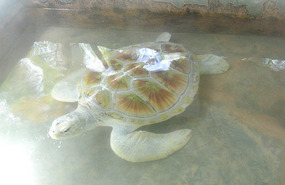
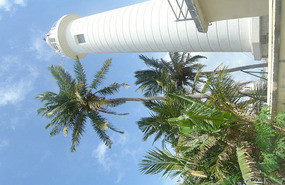
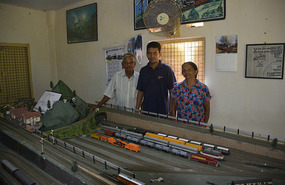
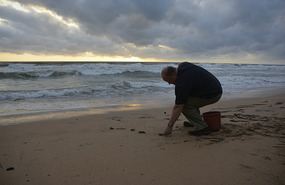






john
2013-08-04
Guides worth a day accommodation.... nothing changes over time.
Fort sounds amazing